In the vast blue expanse of our oceans, a sophisticated form of communication takes place beneath the waves. Dolphins, those intelligent marine mammals with perpetual “smiles,” have developed one of the most complex communication systems in the animal kingdom. Unlike humans who rely primarily on vocal cords to produce sound, dolphins have evolved a remarkable ability to communicate through a series of clicks, whistles, and body movements that allow them to “speak” underwater. This underwater language isn’t just simple animal calls—it’s a nuanced system that helps these social creatures coordinate hunts, warn of dangers, maintain social bonds, and potentially even share abstract concepts. As we dive deeper into understanding how dolphins talk underwater, we discover a world of acoustic precision that has evolved over millions of years, perfectly adapted to marine life and the physics of sound underwater.
The Physics of Sound Underwater

Sound travels approximately four times faster in water than in air—about 1,500 meters per second compared to 340 meters per second in air. This physical property creates both challenges and opportunities for marine communication. Unlike light, which diminishes quickly underwater, sound waves can travel for miles through the ocean, making acoustic communication the most efficient way for marine mammals to interact over distance. Dolphins have evolved to take full advantage of these properties.
Water density also affects how sound is produced and received. Rather than using vocal cords like humans, dolphins generate sounds using nasal air sacs located just below their blowholes. The sounds are then focused and directed through their melon—the rounded organ in their forehead that acts as an acoustic lens. This sophisticated biological equipment allows dolphins to produce highly directional sounds that can be aimed at specific targets, an ability that proves useful both for communication and echolocation.
The Dolphin’s Sound-Producing Anatomy

Dolphins possess specialized anatomical features that enable their underwater vocalizations. The primary sound production mechanism involves a complex system of air sacs connected to their blowhole. When air passes through these sacs, tissue membranes vibrate, creating sounds. The dolphin can control the tension of these membranes and the amount of air passing through, allowing for a diverse range of vocalizations. The nasal plugs and air sacs work like a biological equivalent of woodwind instruments, where changing pressure and airflow creates different tones.
The melon, a fatty organ in the forehead, plays a crucial role in focusing these sounds. Composed of lipids with different densities arranged in a precise structure, it acts as an acoustic lens that can direct sound waves forward. This directionality is vital for both communication and echolocation. Interestingly, dolphins can physically change the shape of their melon to fine-tune the direction and focus of their sound beams, giving them remarkable control over their acoustic output. This anatomical sophistication allows dolphins to produce their characteristic whistles, clicks, and burst-pulsed sounds with precision.
Signature Whistles: Dolphin Names
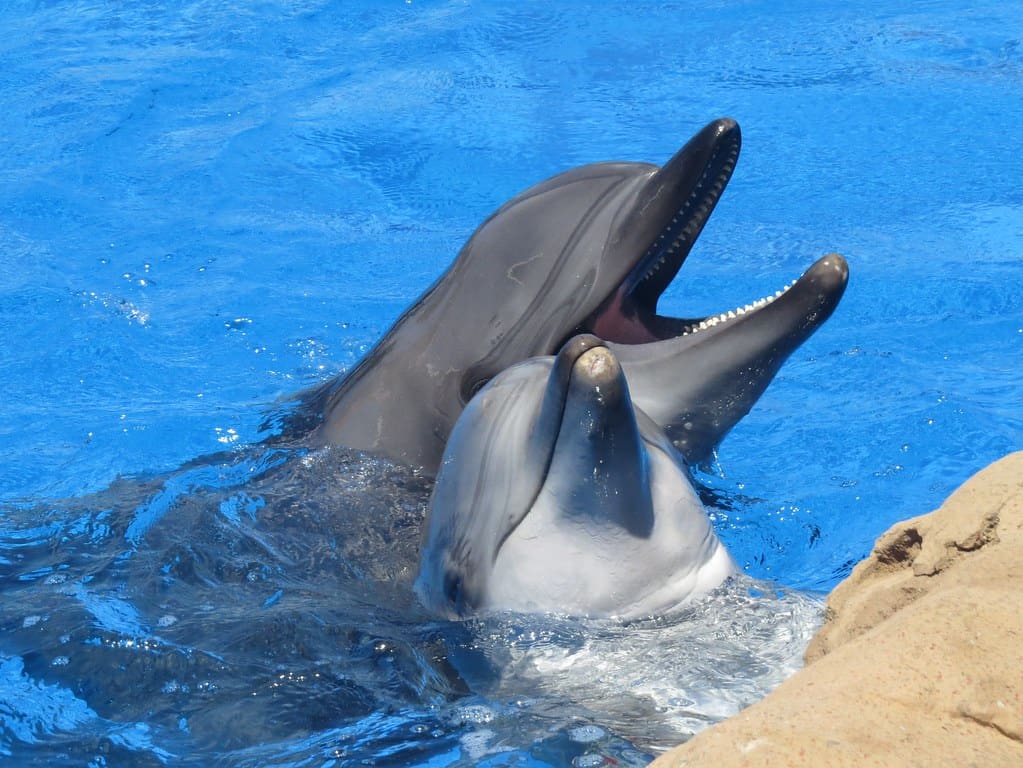
Perhaps the most fascinating aspect of dolphin communication is the signature whistle, essentially a dolphin’s name for itself. Each dolphin develops its unique whistle pattern within the first year of life, a pattern that remains relatively stable throughout its lifetime. These signature whistles serve as acoustic identification cards in the vast ocean where visibility is often limited. When dolphins meet, they exchange these whistles, effectively introducing themselves. Research by Dr. Janik and colleagues at the University of St. Andrews has demonstrated that dolphins can remember the signature whistles of other individuals for decades, even after long periods of separation.
The significance of signature whistles extends beyond simple identification. Mother dolphins teach their calves to recognize their signature whistles shortly after birth, creating a crucial bond for survival. When separated, dolphins will repeatedly broadcast their signature whistle, allowing group members to locate them. In essence, they’re calling their own name, saying, “I’m here!” This system helps maintain group cohesion in the three-dimensional ocean environment where visual contact can easily be lost. Remarkably, dolphins can also mimic the signature whistles of others, essentially “calling someone by name” to get their attention—a linguistic capability once thought unique to humans.
The Role of Echolocation in Communication

While often discussed as separate systems, dolphins’ echolocation abilities are intimately connected with their communication. Echolocation involves producing rapid series of clicks that bounce off objects and return to the dolphin, creating a detailed “sound picture” of their surroundings. These clicks, primarily used for navigation and hunting, are produced in the nasal passages and focused through the melon, just like communication sounds. However, echolocation clicks are typically higher frequency (up to 150 kHz) than social communication sounds, well beyond human hearing range.
Recent research suggests that dolphins may share echolocation information with each other, effectively “showing” what they’ve discovered. By directing their echolocation clicks toward another dolphin or modulating their clicks in specific patterns, they appear to communicate about objects or prey they’ve detected. Some scientists hypothesize that dolphins might even be able to transmit a sonic “image” to others—essentially describing what they “see” through sound. While still controversial, this theory highlights how dolphins may blur the line between sensing the world and communicating about it, potentially creating a form of shared perception that humans can barely comprehend.
Burst-Pulsed Sounds and Social Context
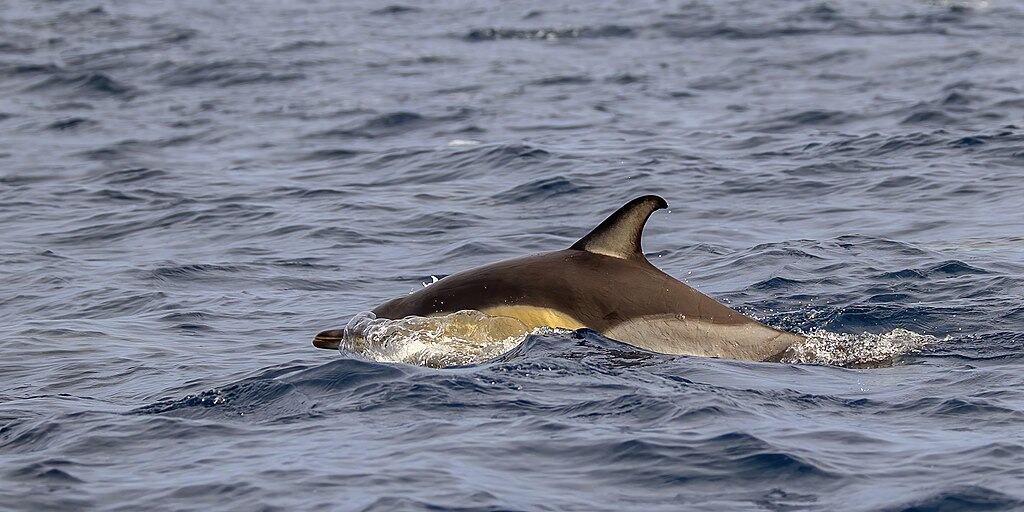
Beyond whistles and echolocation clicks, dolphins produce a third category of sounds known as burst-pulsed sounds. These include squawks, barks, yelps, and other complex vocalizations that appear particularly important in social interactions. These sounds are characterized by rapid sequences of broadband pulses that create a variety of harsh, noisy sounds. Unlike the melodic whistles, burst-pulsed sounds are often associated with emotional states and social discipline. They frequently occur during aggressive encounters, play sessions, or moments of excitement.
The social context of these sounds is crucial to understanding their meaning. For example, specific burst-pulsed sounds consistently appear during disciplinary interactions between mothers and calves or during male alliances’ coordinated behavior. Researchers have observed that certain burst-pulsed sound patterns precede specific group behaviors, suggesting they may function as action signals. These sounds appear to be more emotionally charged than the more “factual” information conveyed by whistles, perhaps serving as the emotional colorings of dolphin language. The intensity, duration, and repetition rate of these sounds seem to convey urgency and emotional state, forming a critical component of dolphin social communication.
Body Language and Multi-Modal Communication
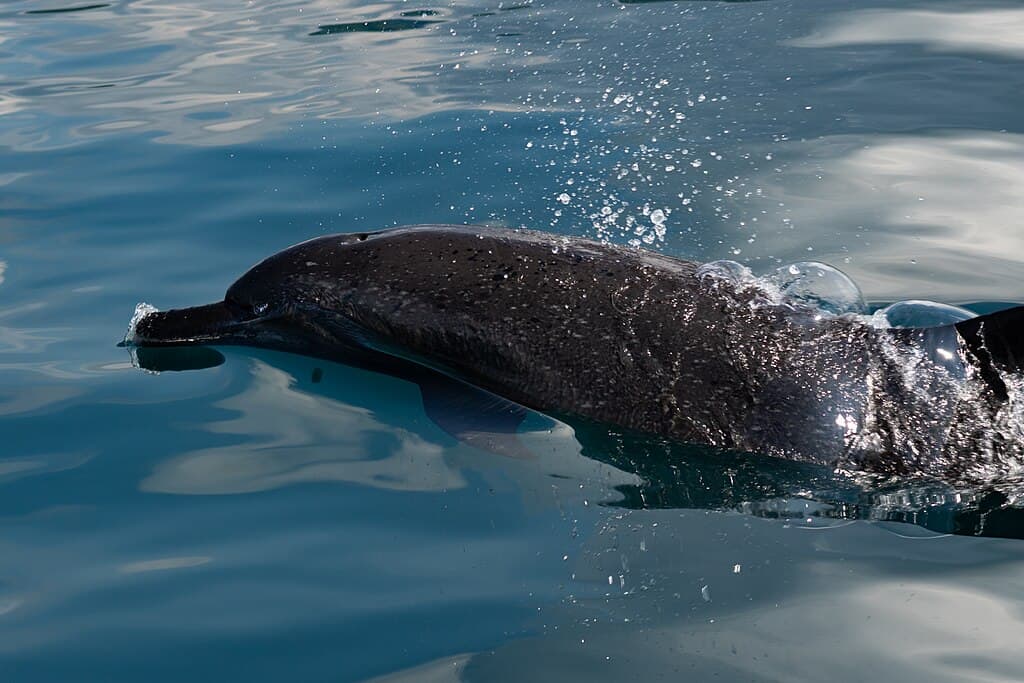
Dolphin communication extends well beyond vocalizations. Their bodies serve as expressive instruments, conveying information through postures, movements, and physical contact. Tail slaps on the water surface can signal aggression or serve as warning signals to the group. Jaw claps (rapid closing of the mouth to create a sharp sound) often indicate irritation or serve as a threat. Even the angle at which a dolphin approaches another can communicate intent and social status. These visual signals complement the acoustic elements of their communication system, creating a multi-modal language.
Touch plays an equally important role in dolphin social bonding and communication. Dolphins frequently engage in petting-like behavior, rubbing against each other in specific patterns that reinforce social bonds. They may use their rostrum (beak) to gently guide calves or nudge companions. The timing and context of these tactile interactions suggest they carry specific meanings within the social group. This integration of acoustic, visual, and tactile communication creates a rich, multi-dimensional language system that allows for nuanced expression of needs, emotions, and intentions—proving that dolphin communication goes far beyond just their famous whistles.
Dialects and Cultural Transmission
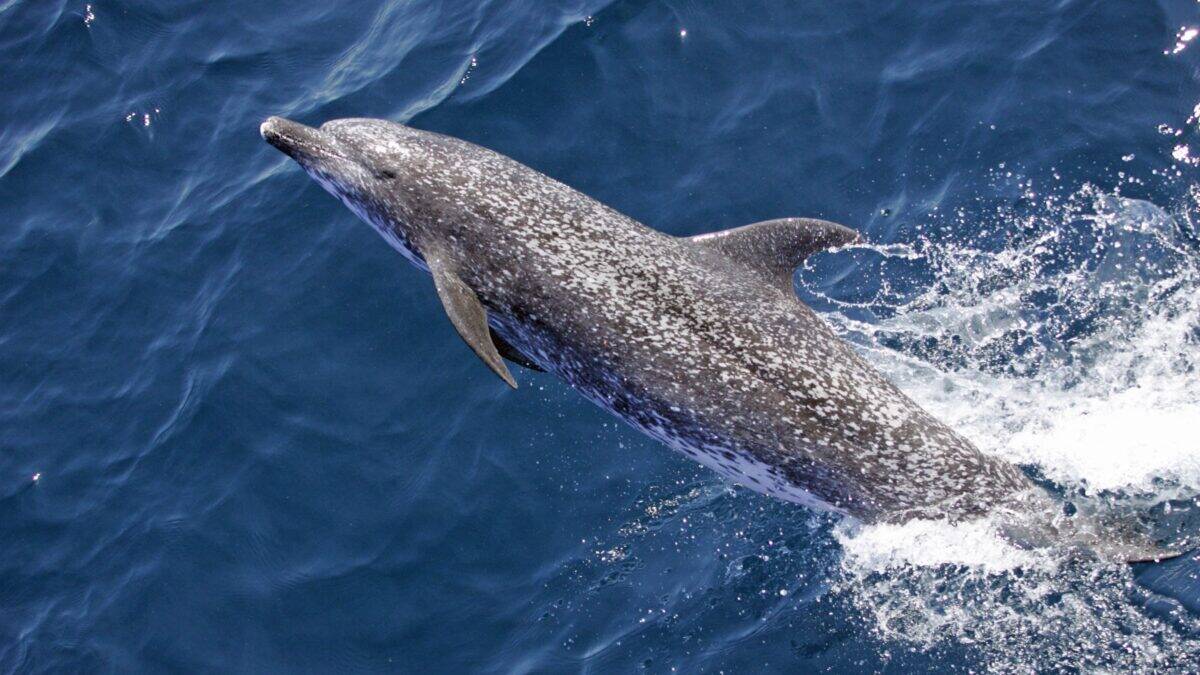
Just as human languages develop regional accents and dialects, dolphin communication patterns show fascinating regional variations. Research has documented distinct “dialects” among dolphin populations, where specific whistle characteristics vary between geographically separated groups. These differences aren’t random—they persist across generations and appear to be culturally transmitted rather than genetically determined. Young dolphins learn the communication patterns of their social group through observation and practice, essentially participating in a form of cultural learning.
This cultural transmission extends beyond basic communication sounds to include specialized feeding techniques and their associated vocalizations. For example, bottlenose dolphins in Shark Bay, Australia, have developed a unique feeding strategy called “sponging,” where they use sea sponges as tools to protect their rostrum while foraging. This behavior is passed from mother to offspring, along with the specific vocalizations associated with this feeding technique. Such examples demonstrate how dolphin communication is embedded within a broader cultural context, with “vocabularies” that reflect their ecological niche and social traditions. This cultural element of dolphin communication represents one of the most compelling parallels to human language development.
Communication Within Pod Structures

Dolphin social structures directly influence their communication patterns. Most species live in fluid social groups called pods, which can range from a few individuals to over a hundred. Within these pods, dolphins establish complex relationships that require sophisticated communication. The hierarchical nature of dolphin societies means dominant individuals often produce specific vocalizations that reinforce their status. Meanwhile, allied subgroups within the larger pod—particularly male alliances that may cooperate for years or decades—develop distinctive communication patterns that strengthen their bonds and coordinate activities.
Communication takes on specialized functions during cooperative hunting, where dolphins must coordinate their movements to herd fish schools effectively. They use precise sequences of whistles and burst-pulsed sounds that appear to signal specific maneuvers or timing. Mother-calf communication represents another specialized communication context, with mothers using distinctive whistle patterns when interacting with their young. Calves learn to recognize their mother’s signature whistle within days of birth, creating an acoustic bond that helps maintain contact in the oceanic environment. These varied communication contexts demonstrate how dolphin language has evolved to support their complex social structures and survival needs.
The Challenges of Decoding Dolphin Language

Despite decades of research, truly decoding dolphin language remains one of science’s most formidable challenges. Several factors contribute to this difficulty. First, dolphins produce many sounds outside human hearing range, requiring specialized equipment to capture their full vocal repertoire. Second, their communication likely incorporates subtle variations in sound patterns that our instruments can detect but whose significance we don’t understand. Third, the three-dimensional underwater environment creates communication possibilities fundamentally different from human experience, making it difficult for us to conceptualize how information might be structured.
Perhaps most significantly, the dolphin brain has evolved along a different evolutionary path than the human brain for over 95 million years. Their cognitive architecture likely processes information in ways fundamentally different from our own, potentially using concepts and categories that don’t neatly translate to human language. While we’ve made tremendous progress in cataloging dolphin sounds and correlating them with behaviors, the deeper meaning systems remain elusive. As researcher Dr. Denise Herzing has noted, we may need to develop entirely new frameworks for understanding communication that don’t rely on human language as the model to truly understand how dolphins “talk” to each other.
Research Breakthroughs and Technologies
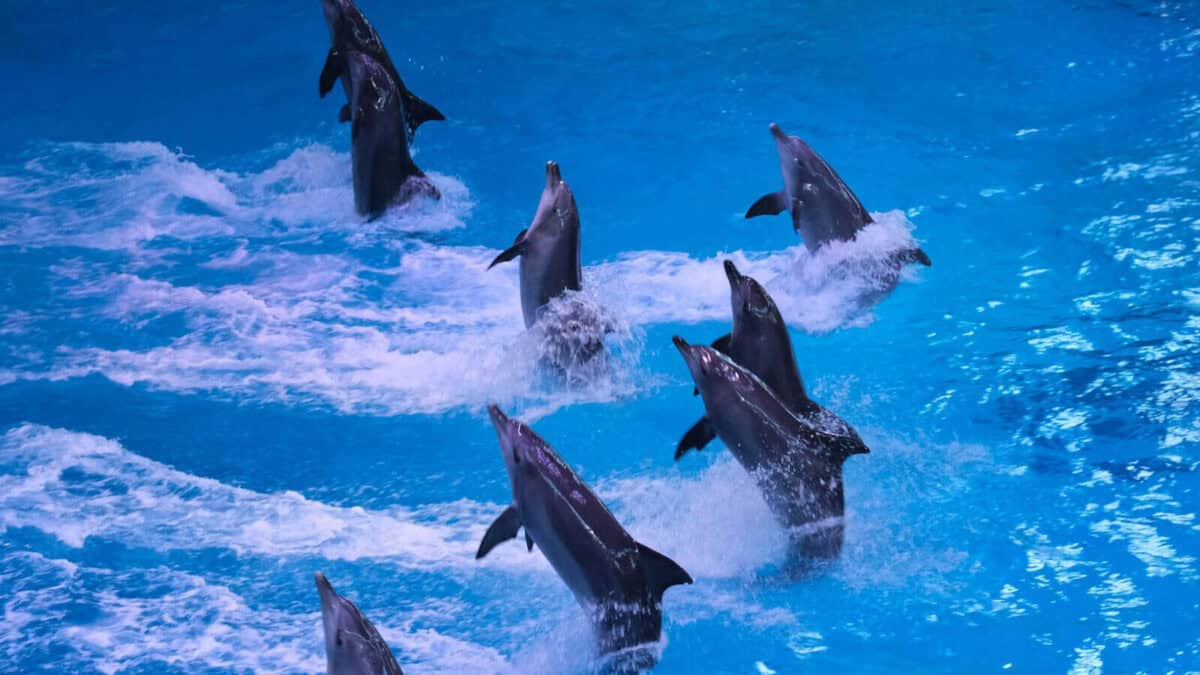
Modern technology has revolutionized dolphin communication research. Hydrophones with greater sensitivity and frequency range can now capture the full spectrum of dolphin vocalizations. Digital signal processing allows researchers to analyze subtle variations in whistles that were previously undetectable. Perhaps most exciting are developments in machine learning and artificial intelligence, which can identify patterns in massive datasets of recorded dolphin sounds. These computational approaches have already helped identify consistent sound patterns associated with specific behaviors, advancing our understanding of their communication system.
Novel research approaches are yielding fascinating insights. Two-way communication experiments, where researchers attempt to establish mutual understanding with dolphins using artificial whistles paired with objects or actions, have shown promising results. In the wild, passive acoustic monitoring allows scientists to record communication patterns without human interference, providing more natural data. Some researchers are developing “dolphin translators” that attempt to correlate specific whistle patterns with contexts and potential meanings. While we’re still far from a true “dolphin dictionary,” these technological advances continue to peel back layers of complexity in dolphin communication, bringing us closer to understanding how these remarkable animals share information underwater.
Threats to Dolphin Communication

Human activities pose serious threats to dolphin communication systems. Ocean noise pollution from shipping, military sonar, and industrial activities has increased dramatically in recent decades, creating an acoustic environment that interferes with dolphins’ ability to communicate effectively. These anthropogenic sounds can mask dolphins’ whistles and echolocation clicks, effectively creating a noisy environment where their “voices” can’t be heard over distances. In some heavily trafficked areas, dolphins have been observed altering their vocal patterns—using higher frequencies or changing call duration—in attempts to compensate for the noise interference.
Beyond noise pollution, chemical contaminants including PCBs, heavy metals, and persistent organic pollutants accumulate in dolphin tissues and can potentially damage the neural systems involved in sound production and processing. Climate change presents additional challenges, as changing ocean temperatures affect how sound travels underwater, potentially disrupting communication ranges and patterns that evolved under different acoustic conditions. Conservation efforts must address these threats not just to protect dolphin populations, but to preserve the integrity of their sophisticated communication systems that are essential to their social structure and survival strategies. Understanding how dolphins talk underwater has thus become not just a scientific curiosity but an urgent conservation priority.
The Future of Dolphin Communication Research

The future of dolphin communication research promises exciting developments across multiple fronts. As artificial intelligence and machine learning techniques become more sophisticated, they will likely reveal patterns in dolphin vocalizations that human researchers haven’t been able to detect. Some scientists are developing underwater robots that can interact with wild dolphins, potentially learning aspects of their communication through direct engagement. Others are focusing on creating comprehensive databases of dolphin vocalizations paired with behavioral contexts, building the foundation for more systematic analysis of their communication system.
Perhaps most intriguing is the emerging field of comparative cognition, which examines how different species perceive and communicate about their world. By studying dolphins alongside other highly vocal and social species—including primates, elephants, and other cetaceans—researchers hope to uncover the evolutionary principles that drive the development of complex communication. This holistic approach may finally help us understand dolphin communication on its own terms, rather than through the lens of human language. As we deepen our understanding of how dolphins talk underwater, we not only learn about these remarkable marine mammals but gain insights into the very nature of communication and consciousness across species boundaries. The language of whistles continues to captivate scientists and the public alike, promising discoveries that may fundamentally change how we understand animal intelligence and communication.
Conclusion
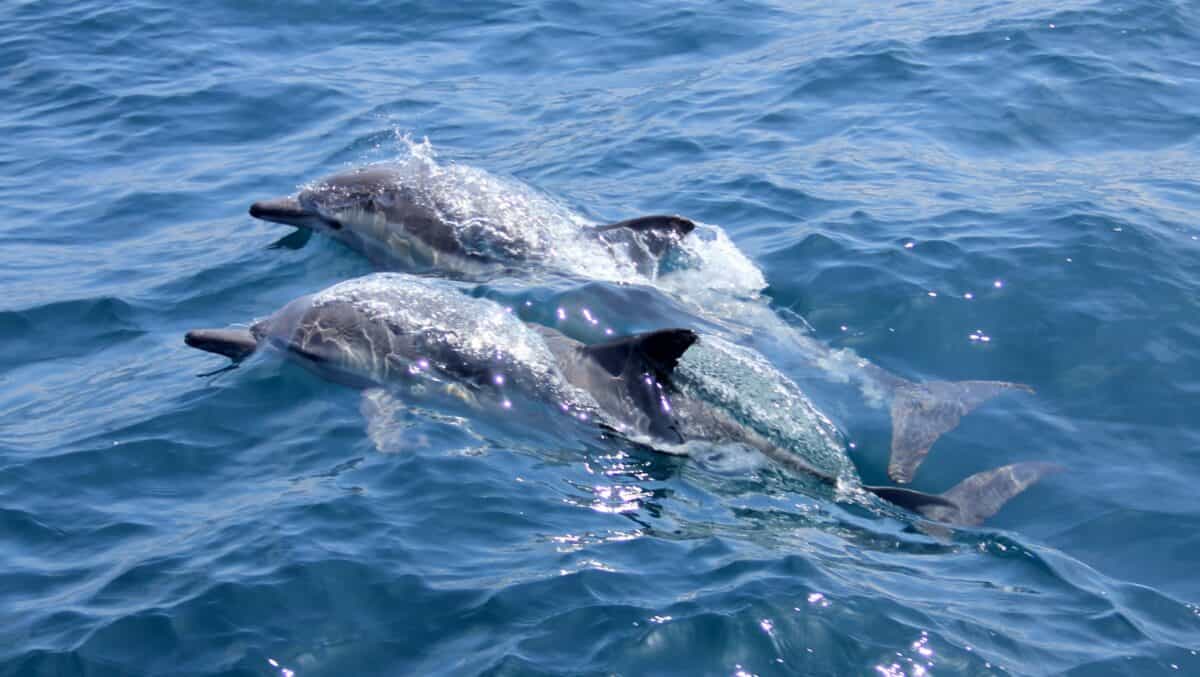
The underwater language of dolphins represents one of the most sophisticated communication systems in the animal kingdom, adapted perfectly to the acoustic properties of the marine environment. Through their signature whistles, burst-pulsed sounds, echolocation clicks, and body language, dolphins maintain complex social structures and share vital information that ensures their survival. While we’ve made remarkable progress in understanding components of their communication system, a complete “translation” of dolphin language remains elusive, reflecting the profound differences in how these marine mammals may perceive and conceptualize their world. As research technologies advance and our approaches become more sophisticated, we continue to uncover new layers of complexity in how dolphins talk underwater. This ongoing scientific journey not only enriches our understanding of these charismatic marine mammals but challenges our assumptions about the nature of language itself, reminding us that human communication represents just one way of sharing information in a world filled with conversation we’re only beginning to understand.
- This Fish Has the Most Teeth in the Ocean—And Uses Them Well - August 9, 2025
- How Wolves Use Group Howls to Reunite With Pups - August 9, 2025
- 12 Dog Breeds That Form the Deepest Emotional Bonds with Their Owners - August 9, 2025

